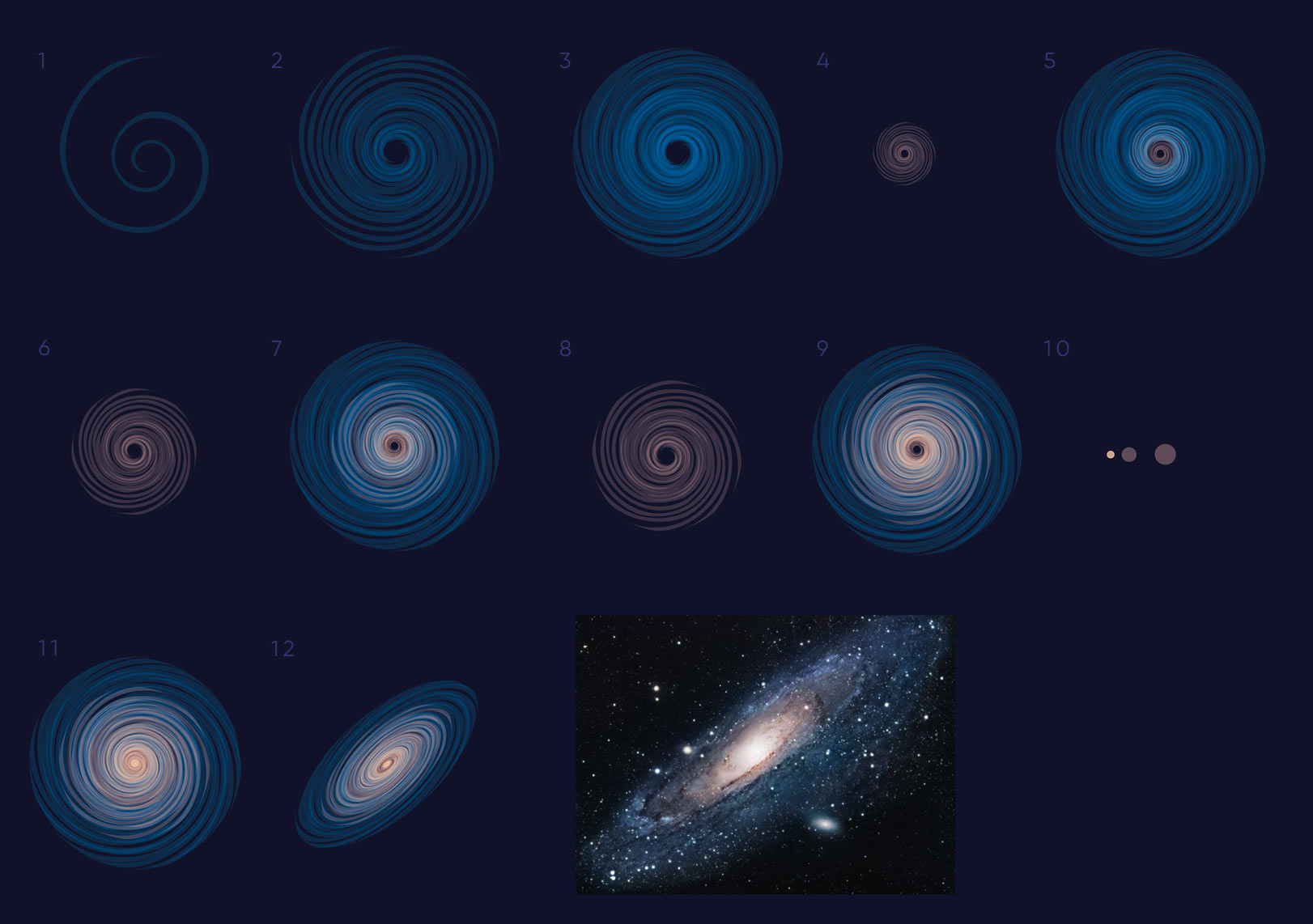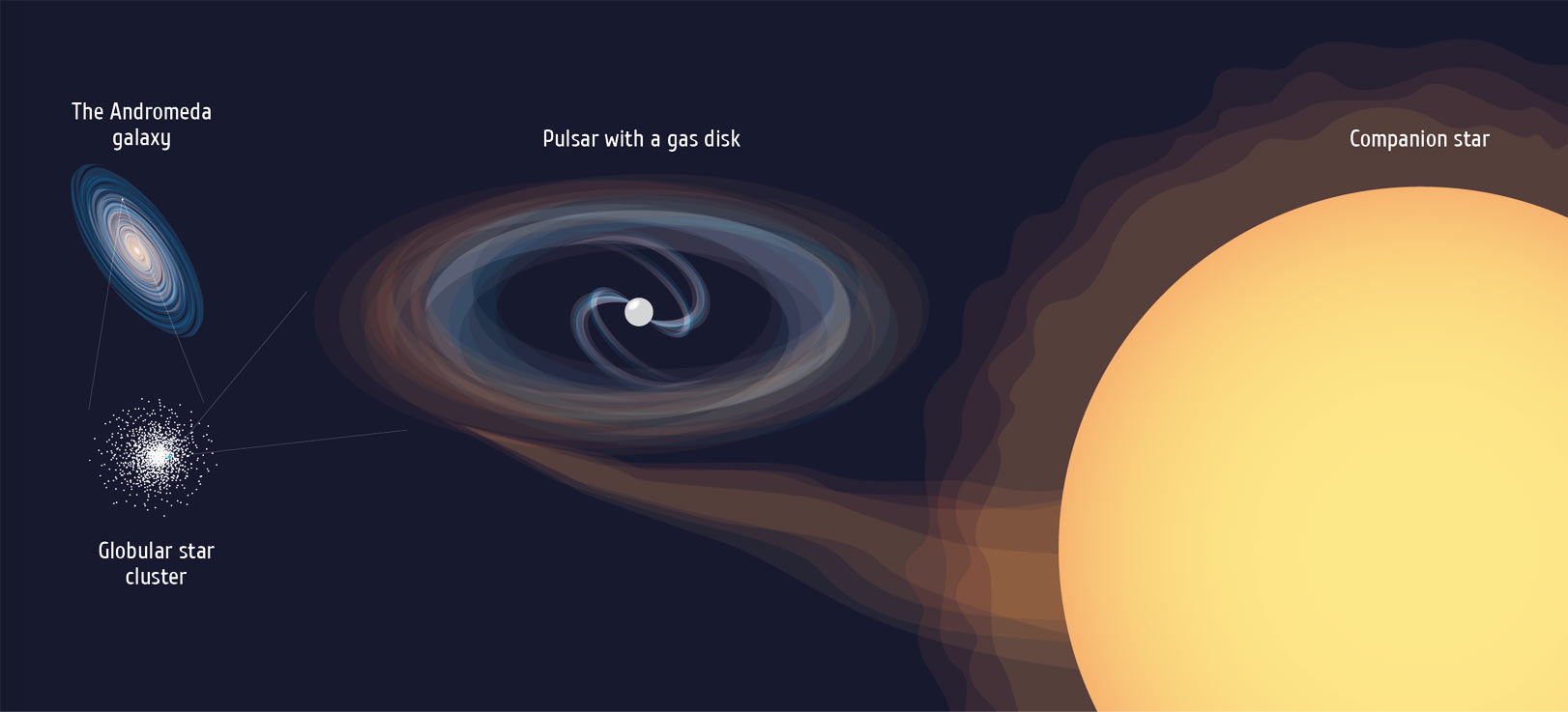Pulsar
Artwork
Andrew Zolotov
Scientist
Ivan Zolotukhin
Date
April 2017
Artwork, explaining the essence of the new approach in the detection of rare celestial bodies, allowing to discover them an order of magnitude easier and faster
One page of fifteen explaining the essence of the mathematical method for finding new pulsars. © Ivan Zolotukhin et al. (2017)
Complexity
What’s the complexity of the invention? From the 17th century until the end of the 20th century, to discover new celestial bodies, astronomers looked at the starry sky through the peephole of a telescope, looking for interesting objects and observing them. That has changed with the advent of electronic telescopes – each of them captures several terabytes of data overnight, which takes several years to view. Therefore, to make discoveries in the 21st century, you not only need to understand astronomy but also to be able to work with big data. In particular, for this discovery algorithms processed a database of 50 billion (!!!) photons of light.
Uniqueness
What’s the uniqueness of the found pulsar? The discovered pulsar rotates 10 times slower than previously known pulsars of this type, it is also 3 orders of magnitude younger than the globular cluster of stars within which it is located, and in addition, it captured a passing star and made its companion, which does not often happen in the stellar world.
Okay, we’ve got it figured out, let’s start creating an illustration. More precisely, the illustrations, because it turned out that we need two of them – one without text, only with an illustration of the position of the found pulsar, and the other with a detailed description of the discovery.
We begin with the most important thing – the drawing of the pulsar. There are no pictures of the pulsar, as they are all far away from us, so they look like white dots in the images. But there is a theoretical model described by scientists:
Pulsars are a highly magnetic, rapidly spinning neutron stars with a diameter of only 20 km but with the mass 1,4 times larger than the Sun. The discovered pulsar is orbited by a less massive star 3 million km across. It pulls the gas from the companion star, the matter then inspirals to the pulsar’s surface and makes a hot spot which is seen from the distance of 2,5 million light years like a pulsating light due to the rotation of the neutron star..




Next, it is necessary to reflect the location of the found pulsar. We take the source code from the scientists:
And we find out that the pulsar is found in the Andromeda Galaxy (2.5 million light years away), in a globular cluster of stars. Scientists want the illustration to reflect nesting, as in the original photos. Drawing the Andromeda Galaxy:
A spherical cluster of stars does not require much detail and can be shown schematically. It remains to finish drawing the companion star and to reflect the nesting:
The illustration for the scientific article is ready. Now the most interesting thing: is to create an illustration with an explanation of the essence of the discovery, its complexity, and its uniqueness.
We add a header, characteristics of the objects displayed, and blocks describing the uniqueness of the discovery and its complexity. Since not everyone knows where the Andromeda Galaxy is, we show how far away it is. And we make the images of the galaxies more conventional, since in the small size, the detailed version is no longer readable.






